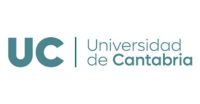Sorafenib is the principal (and until recently the only) first-line systemic treatment for patients with advanced hepatocellular carcinoma (HCC). Despite having been shown to improve survival in 2 randomized clinical trials compared with placebo [Llovet JM et al. N Engl J Med. 2008; 359: 378-90 and Chen A-L et al. Lancet Oncol. 2009; 10: 25-34] its has been undervalued due to the absence of complete responses even though patients who develop early dermatologic reactions have shown very positive outcome. In particular, the complete radiological response has been described anecdotally.
The objective of the study was to know the complete radiological response rate of patients with HCC treated with sorafenib, as well as to analyze the characteristics of these patients, including the development of early dermatological adverse effects, which have been related to a better prognosis.
For this purpose, a retrospective multicenter study was carried out, selecting those patients with complete radiological response during treatment with sorafenib.
We reviewed 1,119 patients in 13 Spanish centers. Of these patients 12 (1.1%) achieved complete radiological response after starting with sorafenib. These patients (males 75%, median age 59.7 years, 83.4% Child-Pugh A, BCLC C 83.3%) had a median overall survival of 85.8 (95% CI 67.8-103.8). Nine of the 12 patients had elevated baseline AFP and in 8 of them it was normalized. Of the 12 patients, 7 stopped treatment with sorafenib after reaching a complete response, of which 5 presented recurrence.
Eleven (91.7%) of the 12 patients presented adverse dermatological effects in the first 60 days of treatment, a much higher proportion than that reported in previous studies in our environment (approximately 24% in the SHARP study [Llovet JM et al., N Engl J Med. 2008; 359: 378-90], 37% in the study by Reig et al [Reig M et al., J Hepatol 2014; 61: 318-324], approximately 26% according to data from the GIDEON study in Spain [Turnes J et al., Gastroenterol Hepatol, 2015; 38: 263-273]).
The conclusion of the study is that the complete response with sorafenib affects 1% of the patients and there seems to be an association with the occurrence of adverse dermatological effects. The mechanism by which adverse dermatological effects are associated with the radiological response and with a better prognosis is unknown, but it is speculated with a possible immunomodulatory / proinflammatory role induced by the drug. The appearance of this toxicity should be interpreted as a favorable prognostic marker and it is extremely important to optimize its management in order to try to maintain the treatment in these patients.
Reference: Study published in the journal Hepatology. Jordi Rimola, Álvaro Díaz-González, Anna Darnell, María Varela, Fernando Pons, Manuel Hernández-Guerra, Manuel Delgado, Javier Castroagudin, Ana Matilla, Bruno Sangro, Carlos Rodríguez de Lope, Margarita Sala, Carmen González, Carlos Huertas, Beatriz Mínguez, Carmen Ayuso, Jordi Bruix, María Reig.





















